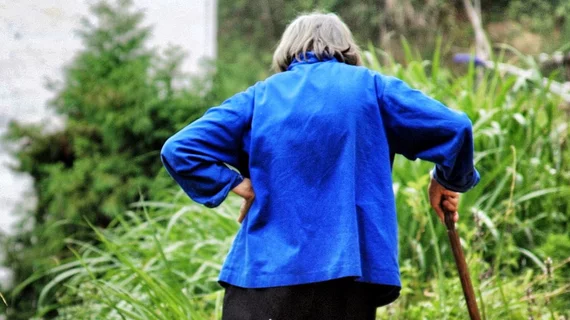Radiologists can play ‘significant’ role in systems-based approach to boosting osteoporosis outcomes
Radiologists can play a “significant” role in a systems-based approach to improving outcomes for osteoporosis patients, according to a new analysis published Monday in JACR.
Upward of 30% of patients who receive a special cement injection in a fractured vertebra (from an interventional radiologist or other doc) will experience another break within a year. This setback can be avoided, however, with the appropriate treatment.
Wanting to address this concern, the University of Wisconsin Department of Radiology adopted a multidisciplinary “Fracture Liaison Service” to improve follow-through after vertebroplasty. It’s producing success, increasing patients’ likelihood of having their osteoporosis therapy “optimized,” a crucial factor to preventing secondary fractures.
“The Own the Bone program is currently integrated at 158 sites across the United States and provides radiologists a significant opportunity to be partners in a systems-based approach to improving patient outcomes and reducing health care costs,” Anna Sorensen, MD, a rad with the University of Wisconsin School of Medicine and Public Health, and colleagues wrote June 21.
The institution first implemented the American Orthopaedic Association’s post-fracture quality program in December 2016. For their study, they tracked chart reviews of consecutive vertebroplasty patients between 2016-2020 both before and after the practice change. The AOA’s program refers patients to a dedicated physician assistant charged with comprehensively evaluating and treating osteoporosis patients. Individuals return to the care of their primary care doc about one year after treatment is stabilized, the authors noted.
All told, the University of Wisconsin treated 137 vertebroplasty patients during the study period—39 before and 98 after implementing the quality program. About 73% saw their treatment modified through the Fracture Liaison Service (the name UW gave their own local offering), and those treated through the FLS also were more likely to have a dual-energy X-ray absorptiometry scan or their vitamin D levels drawn. Secondary fractures occurred in about 23% of all patients, with a trend toward reduced risk in the intervention group. Forcing patients to opt-out of the service, rather than opt in, was also effective, producing a 75% referral rate, Sorensen et al. found.
You can read more about their findings in the Journal of the American College of Radiology here.

